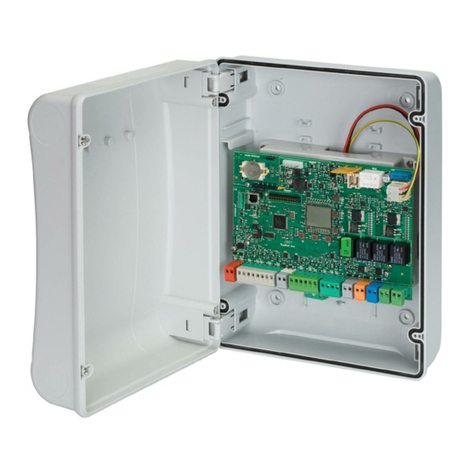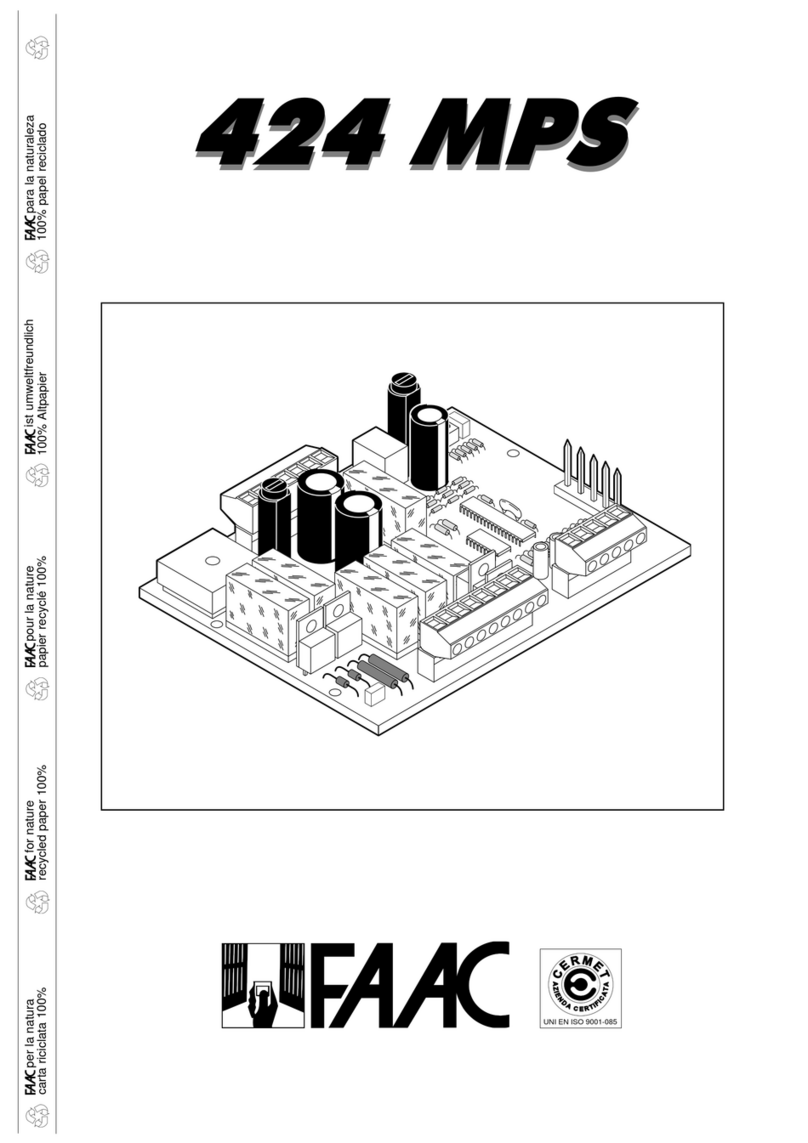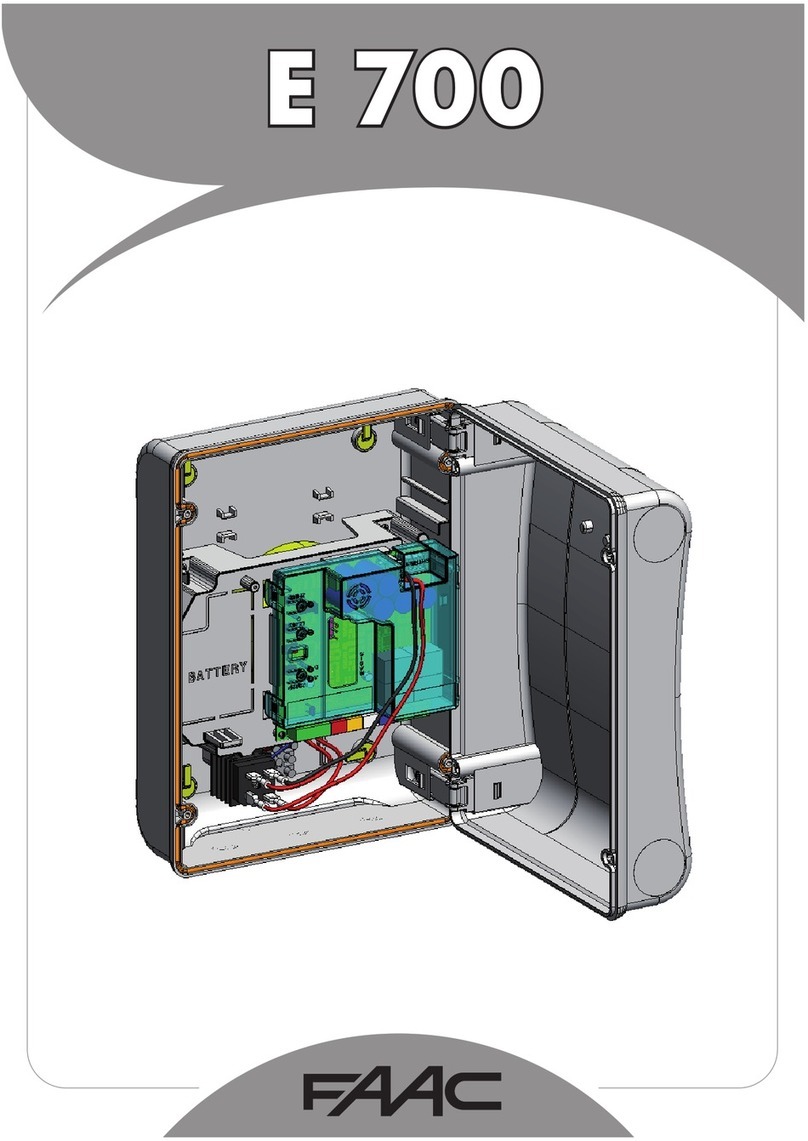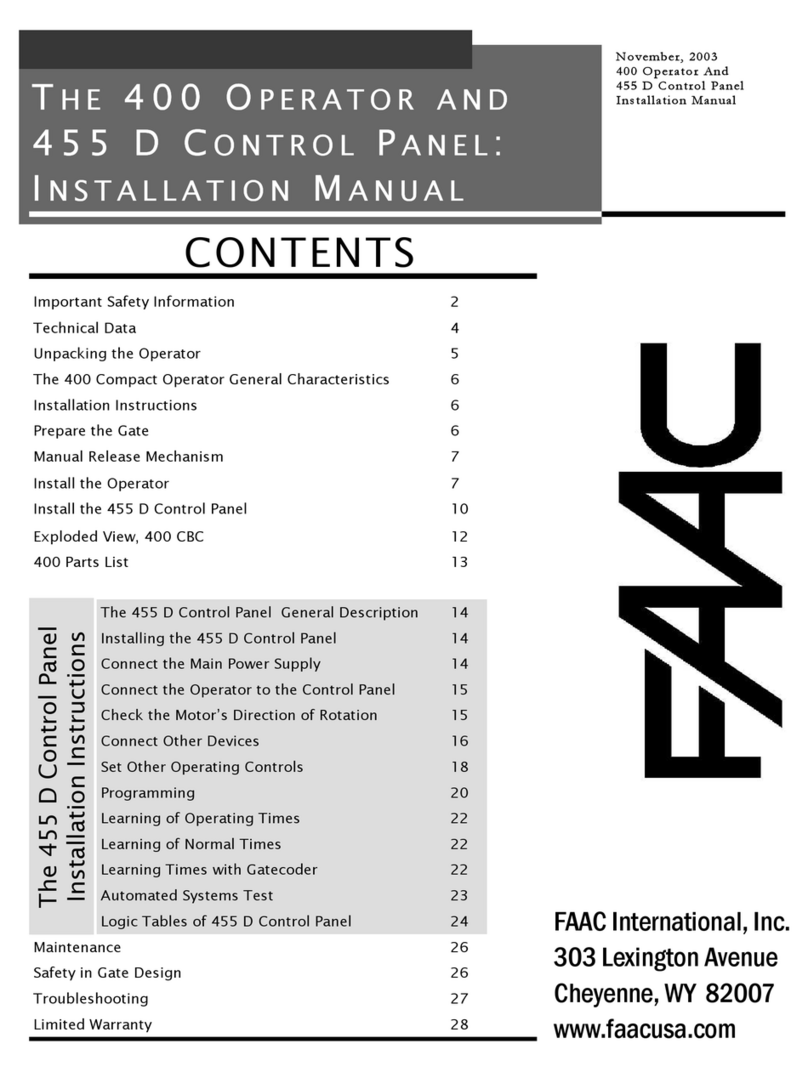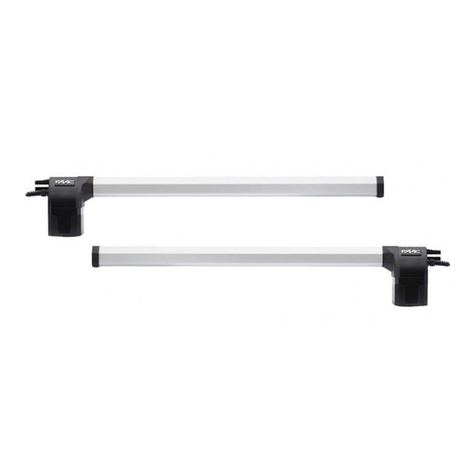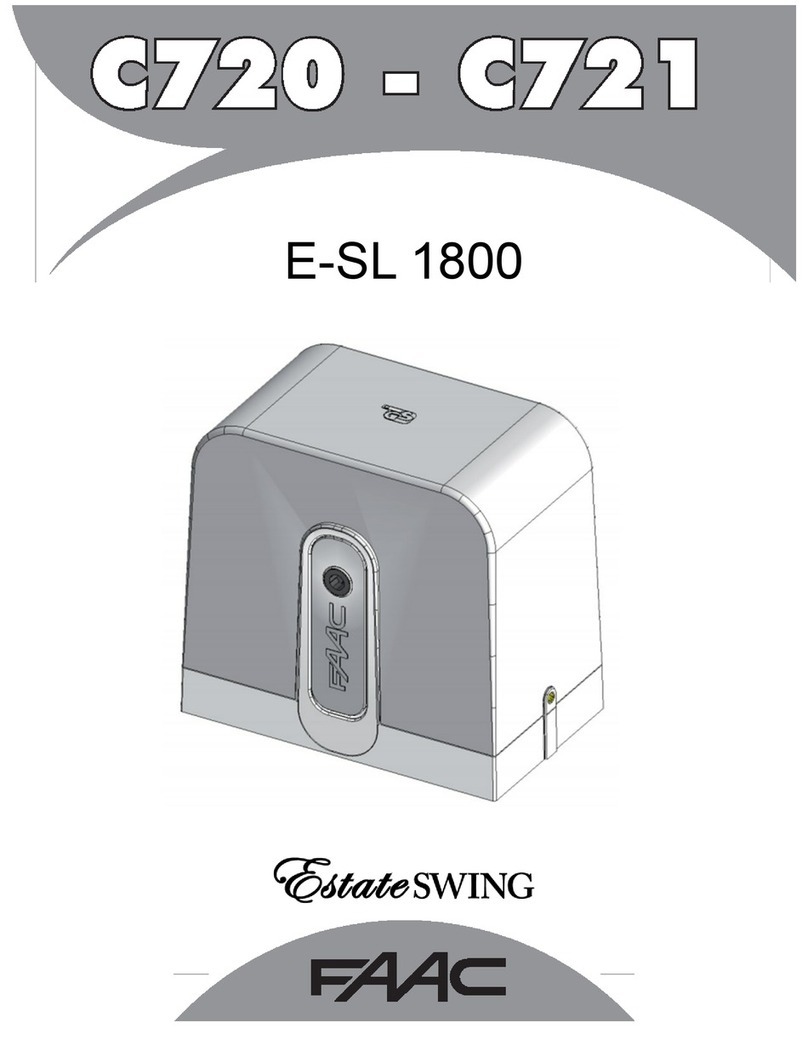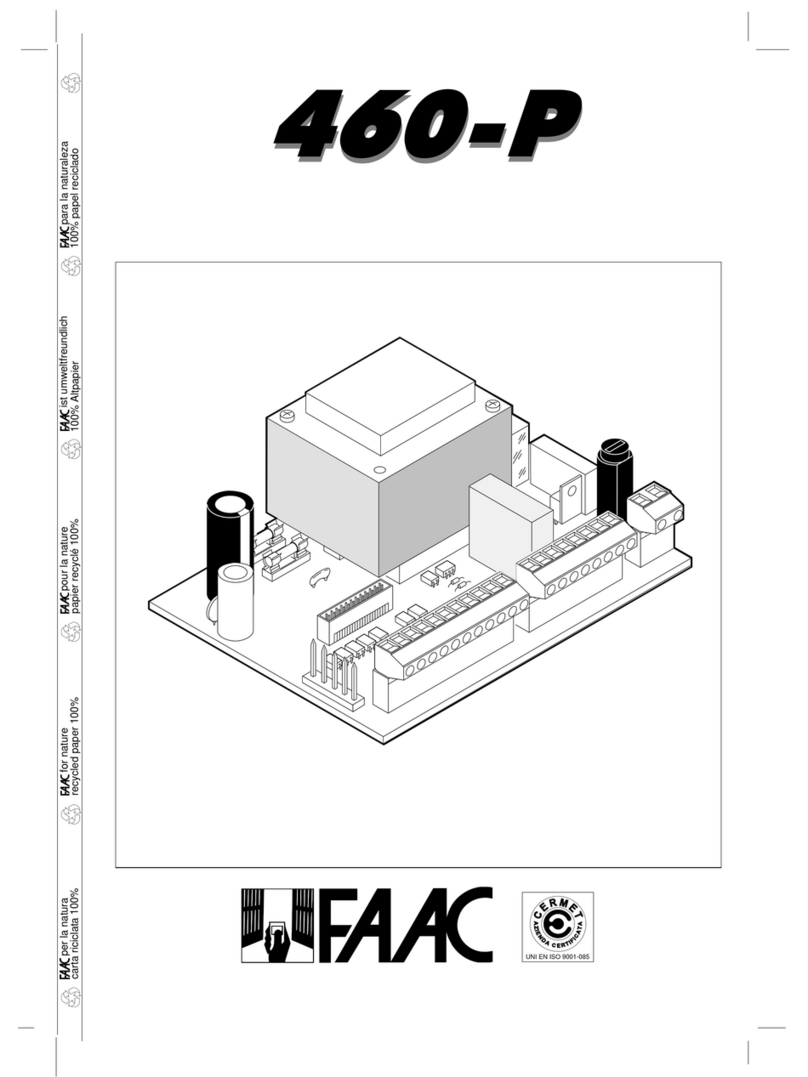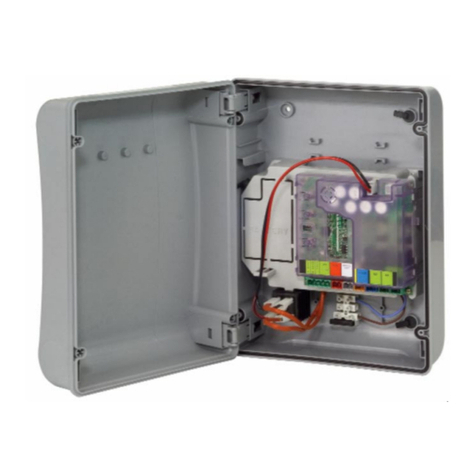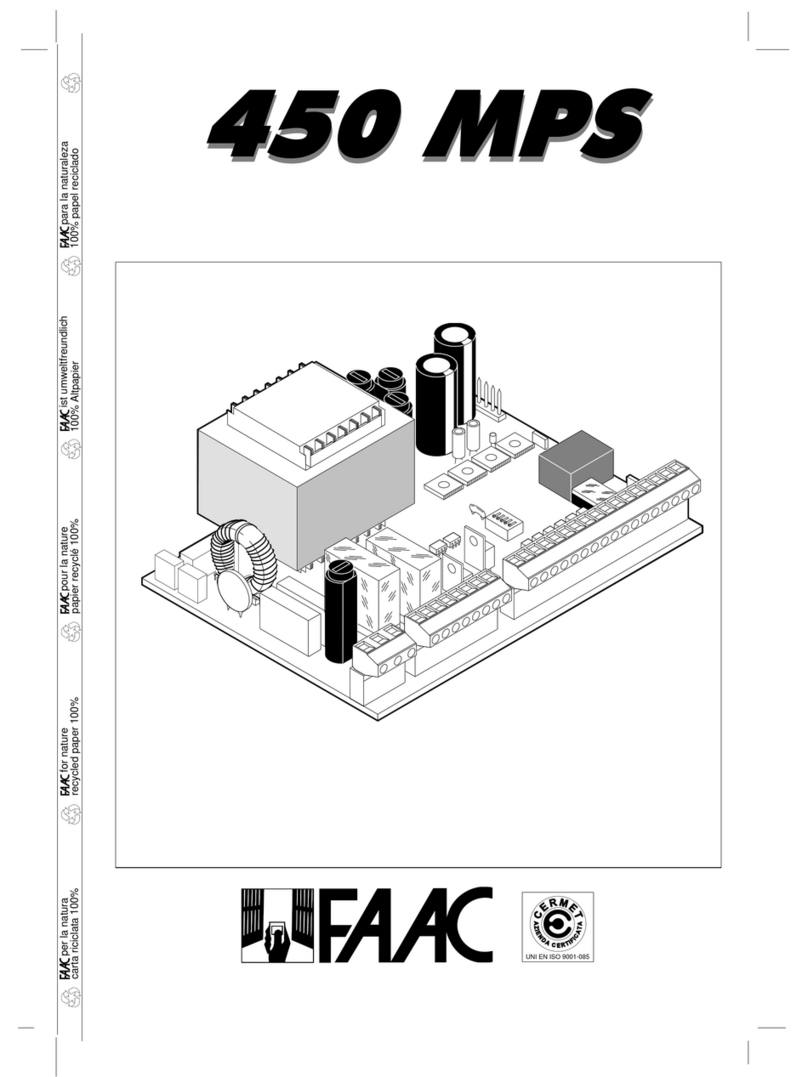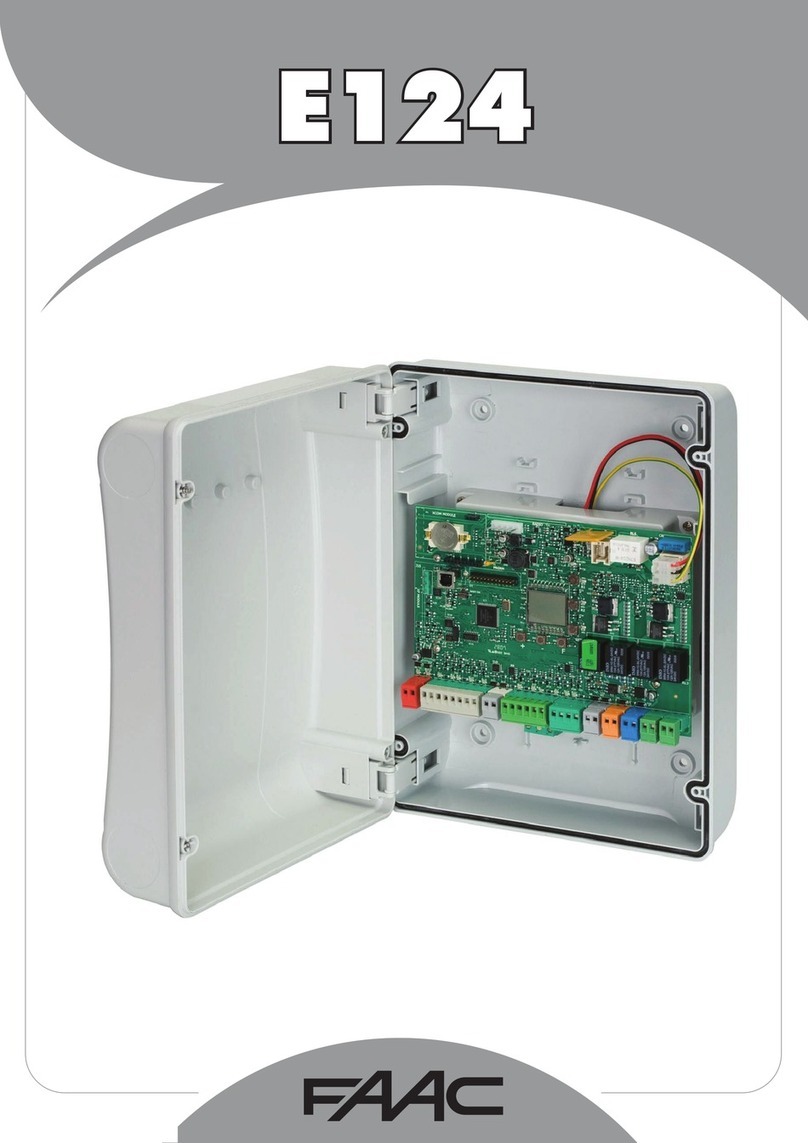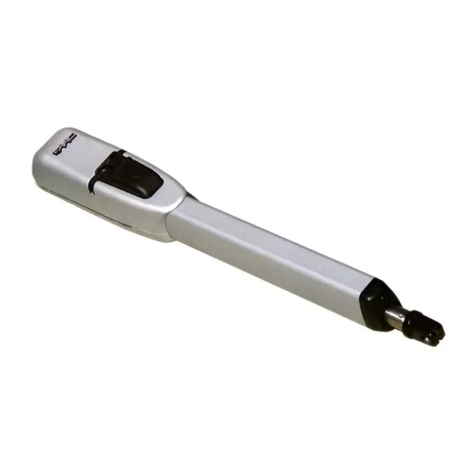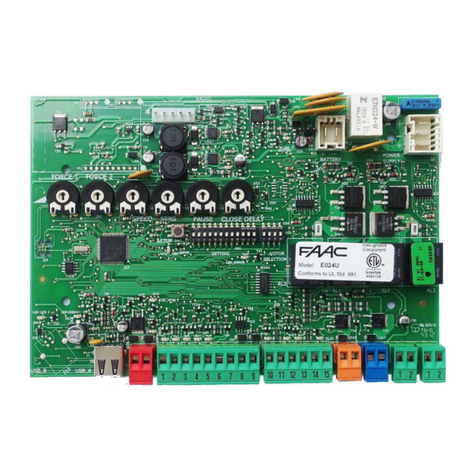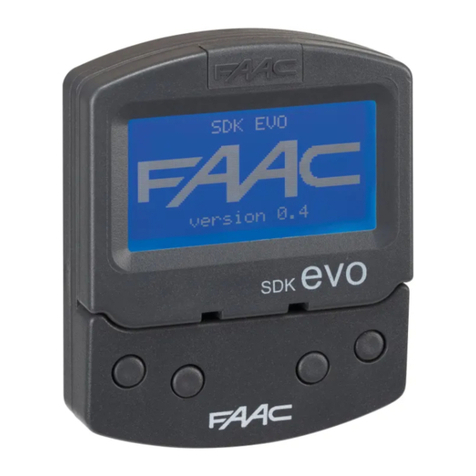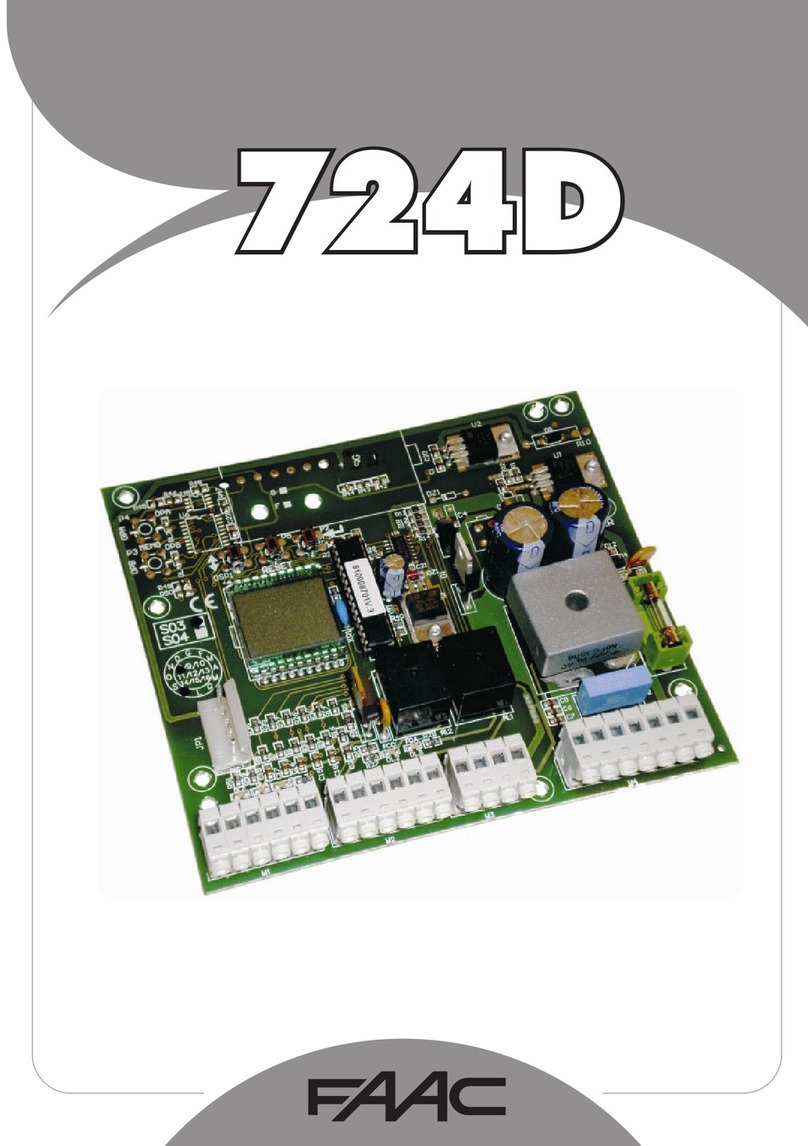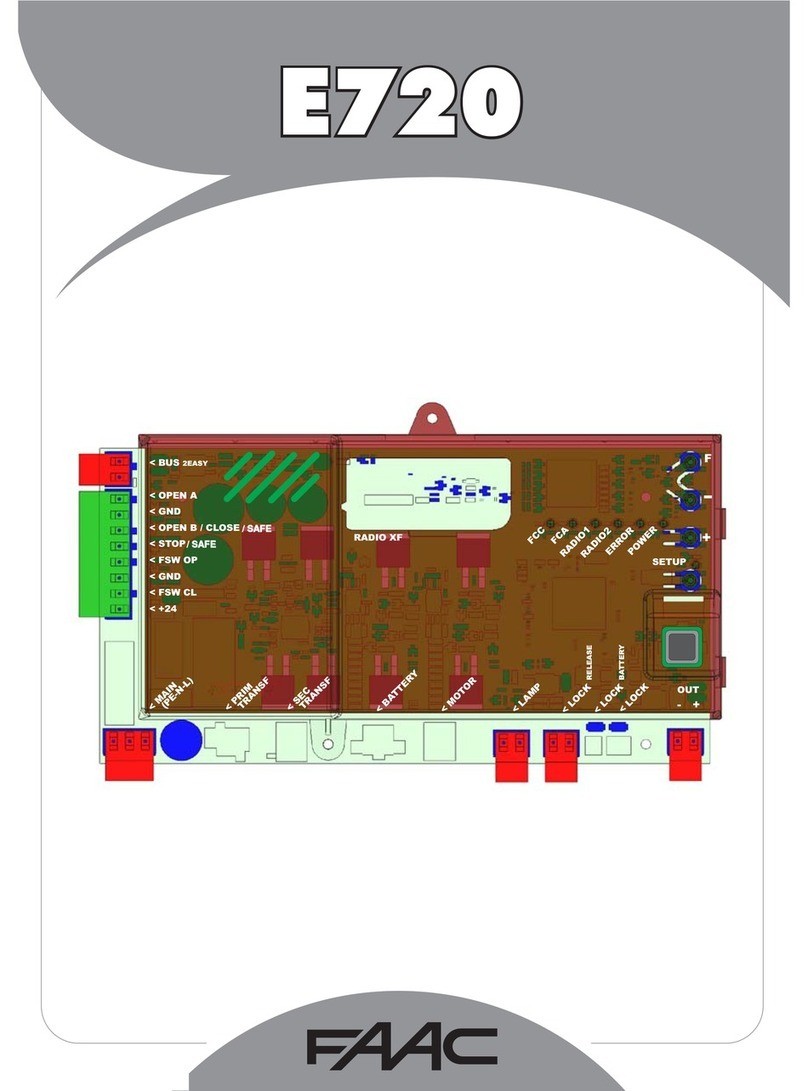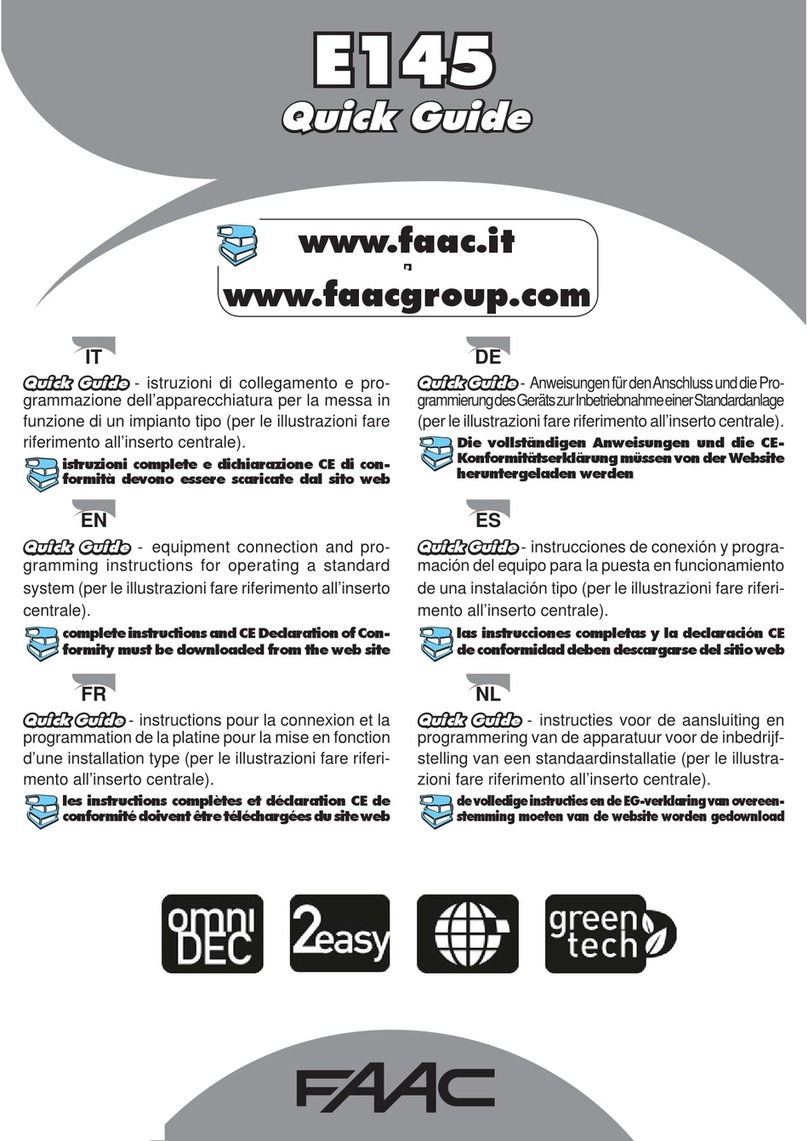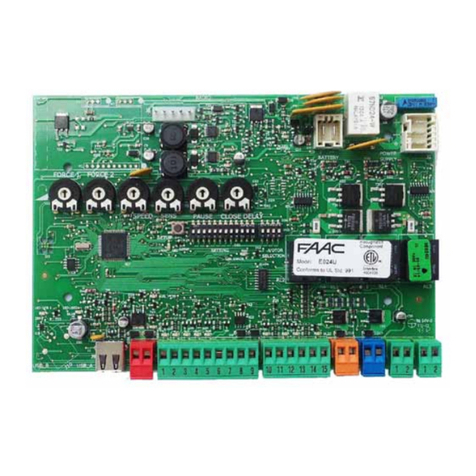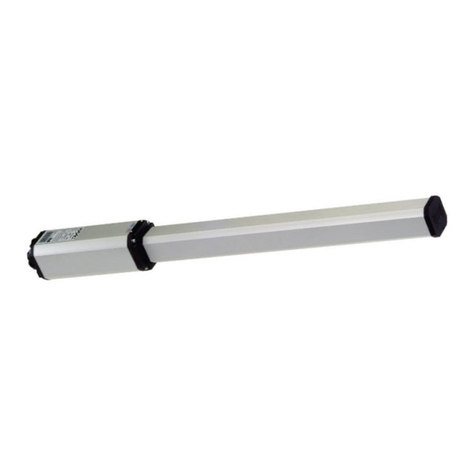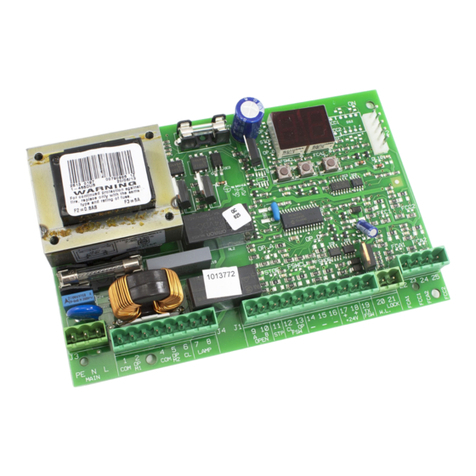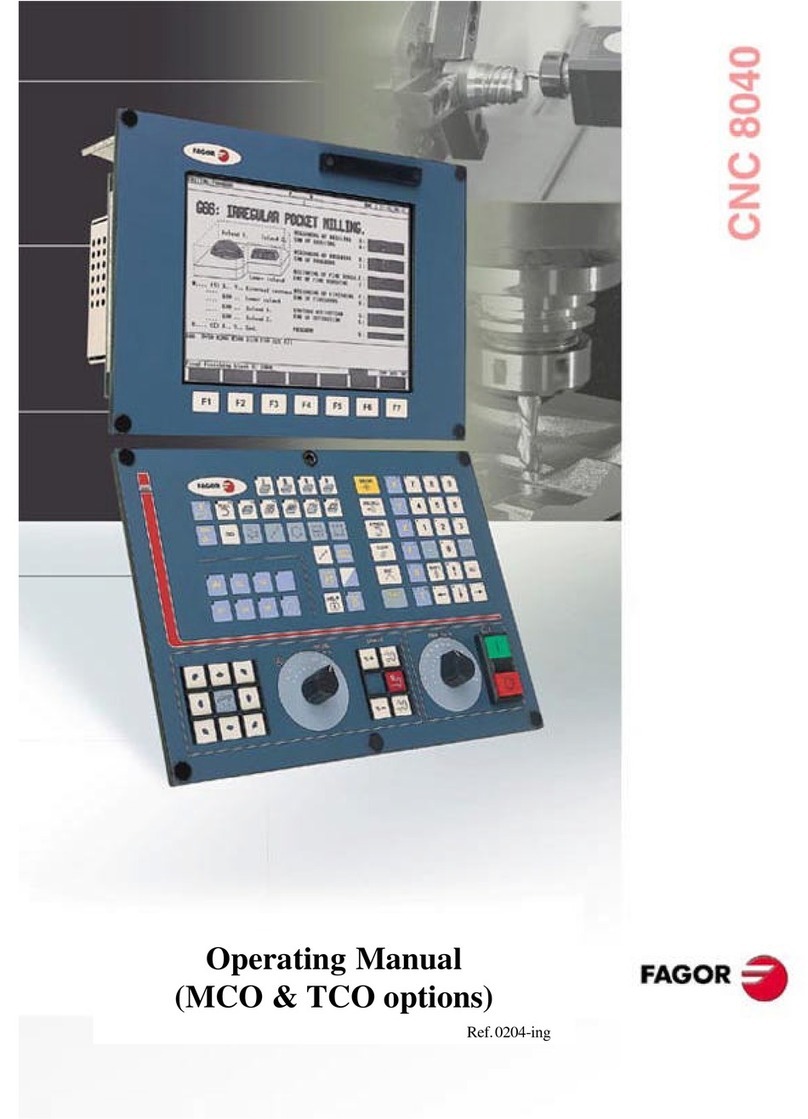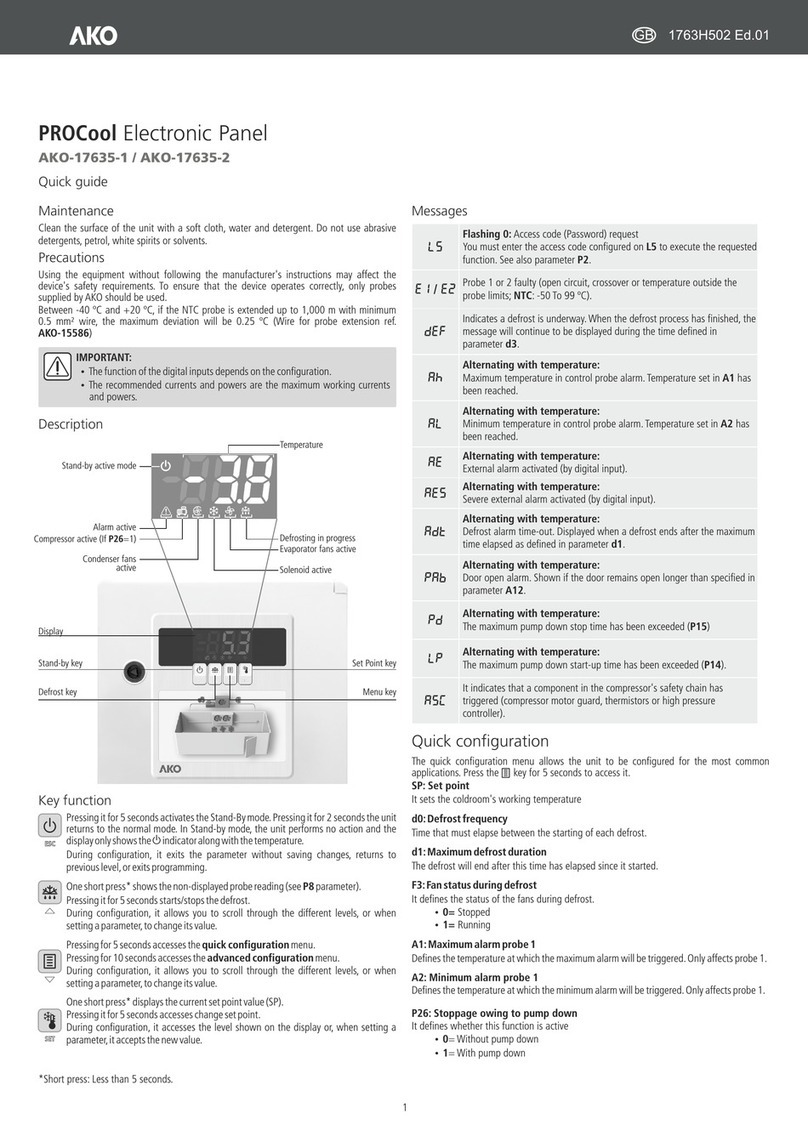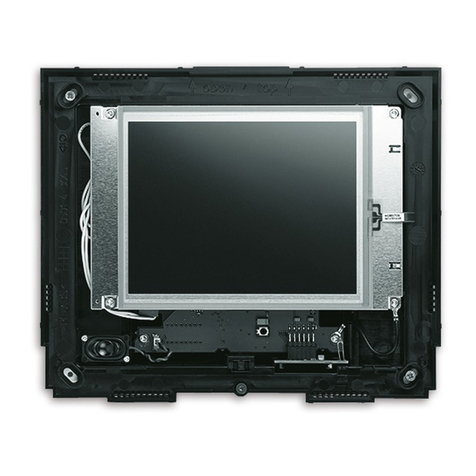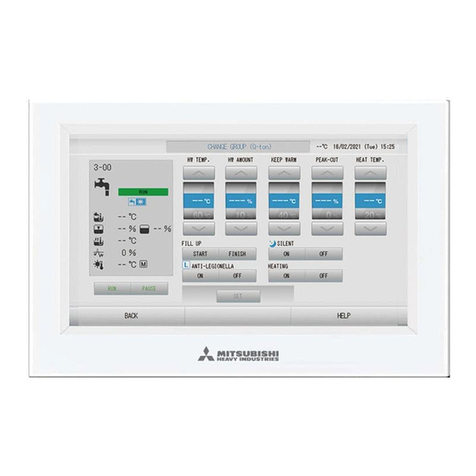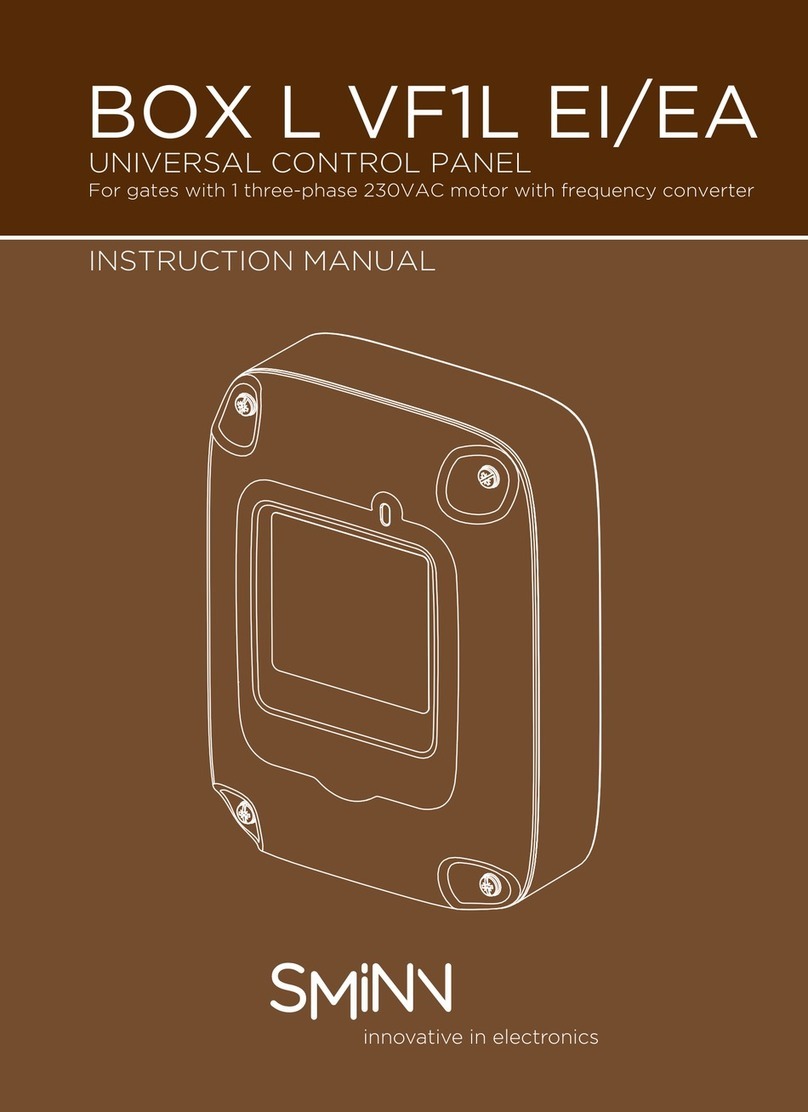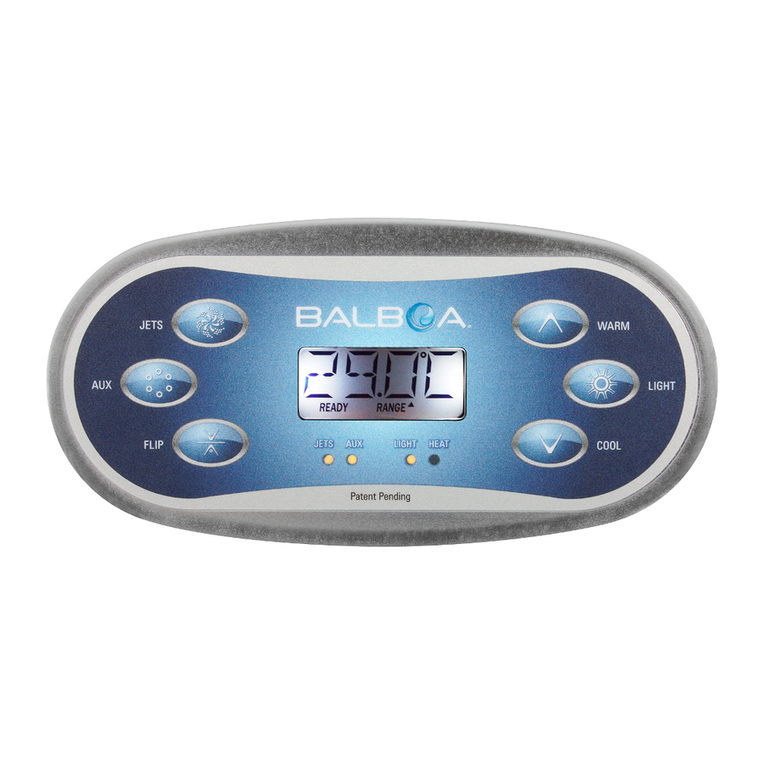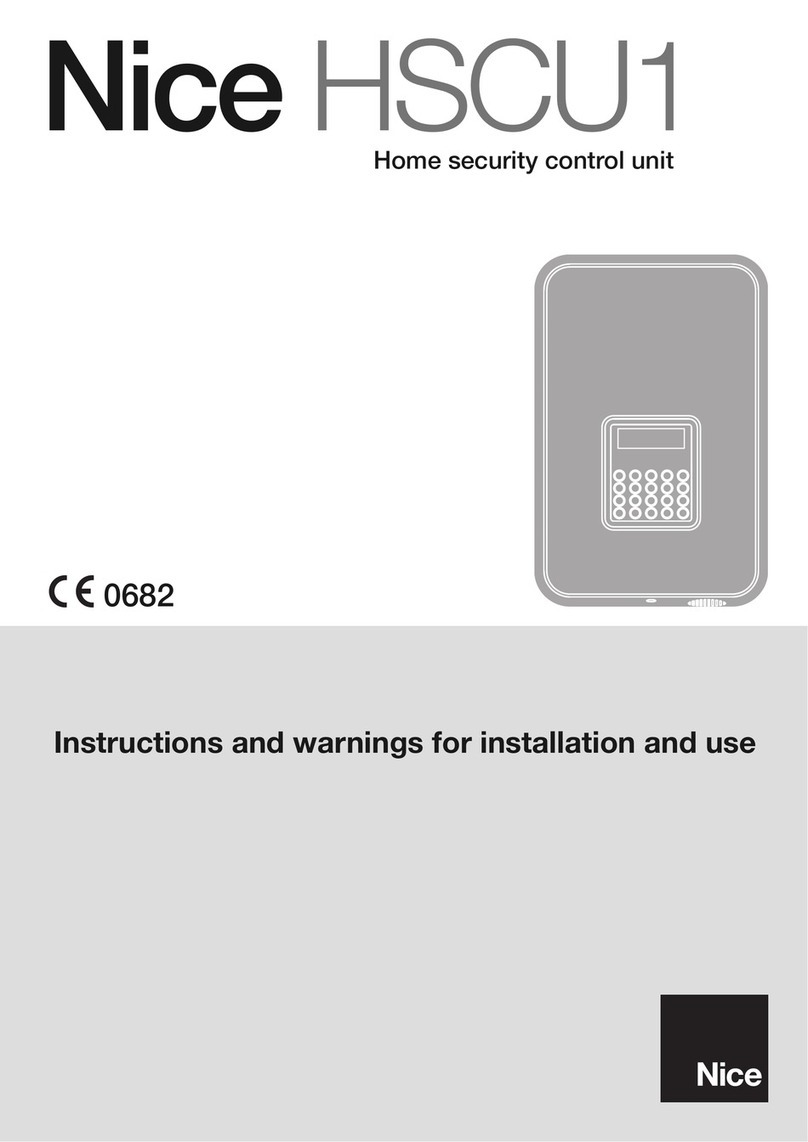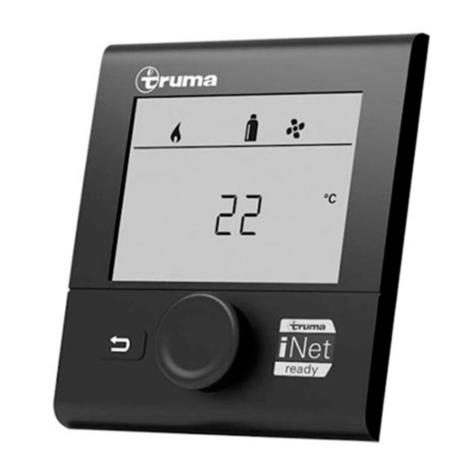
The 400 Operator
General Characteristics
The FAAC 400 Operator is an automatic gate operator for a
swinging gate leaf. It can accommodate a gate leaf of up to
2000 lb (900 kg) and up to 20 ft (6 m) in length.
The self-contained 400 Operator is an electro-hydraulic unit
consisting of an electric motor, a pump, a valve assembly,
and a hydraulic cylinder, all housed in an anodized aluminum
oil reservoir.
The 400 Operator can be used to swing the gate leaf inward
or outward. Most versions provide hydraulic locking in at
least one position, either opened or closed, depending on how
it was ordered.
The hydraulic lock is a service device rather than a security
device. Additional, external locks are recommended under the
following conditions:
.You are installing the Model 400 SB.
.The length of the gate leaf is 12 ft or more.
.The installation requires tight security.
.The site is subject to vandalism.
.The site is subject to strong or very gusty wind.
.You are installing a solid face gate.
For gates with two leaves, two operators are installed, one
on each leaf, and both are wired to one control panel. In such
two-operator gate installations, one leaf can be programmed
to open/ close slightly later than the other leaf to accommo-
date overlapping gate designs.
For its protection, the single-phase, bidirectional motor shuts
off automatically if its operating temperature reaches 212 deg
F (100 deg C). Also for the protection and proper operation
of the 400 Operator, each gate leaf on which it is installed
must have a fixed positive stop in both the opened and closed
positions.
The 400 Operator also includes a key-operated Manual
Release mechanism and two bypass valves that precisely
control the force applied to the gate leaf through the 400
Operator.
The Manual Release mechanism is a key-operated device that
disengages (or engages) the hydraulic system of the 400
Operator. When the hydraulic system is disengaged, you can
open and close the gate leaf by hand. Such manual operation
of the gate is necessary during installation and useful during
power failures.
The two bypass valves are located beneath the locking cap.
You need to adjust the bypass valves to meet the safety
standards of FAAC International, Inc. The standards state
that the gate leaf should stop if it encounters a force of
more than 33 lb (15 kg).
Additional reversing devices (such as inductive loops and
photocells) should be installed to provide more complete
protection for people and property.
The electronic control panel is a microprocessor-based con-
troller that accepts a wide range of product accessories and
reversing devices, thus allowing for flexible gate system
design.
450 MPS Logic Modes
Note: The 450 provides inputs for opening reversing devices
and closing reversing devices. FAAC strongly recommends
the use of reversing devices, such as photocells or other
non-contact sensors.
The following logics are available on the 450 MPS:
.A(automatic): The gate opens on command and
automatically closes after a pause phase. A second
command on opening is ignored; a second command
during the pause phase causes the gate to close
immediately; a second command during closing
reopens the gate.
.S (security): The security mode is like A logic except
that a second command during opening immediately
closes the gate.
.E (semi-automatic): This mode requires a command to
open and a command to close. A second command
during opening or closing causes the gate leaves to
stop. A third command then closes the gate.
.EP (semi-automatic, step by step): This mode requires
a command to open and a command to close.
A second command during opening or closing
causes the gate leaves to stop. A third command
then reverses the previous motion of the gate.
.B (manned, pulsed): This mode is designed for guard
station use and requires a three-button switch
(pulsed) to open, close, and stop the gate.
.C (manned and constant): This mode requires constant
pressure switches. One to open and one to close.
No pressure on a switch stops the gate.
6
